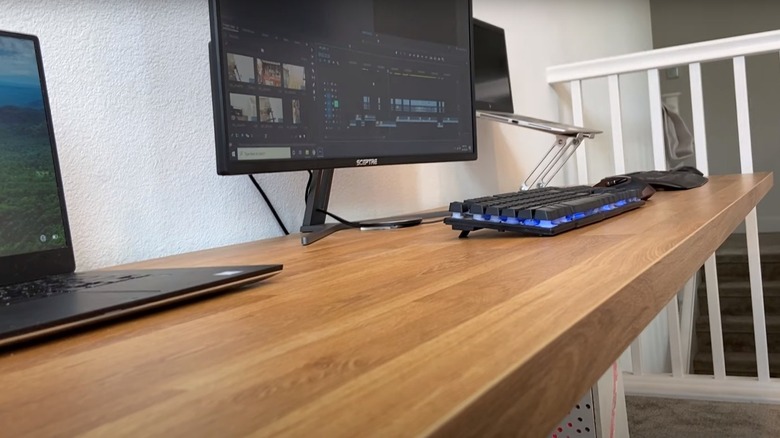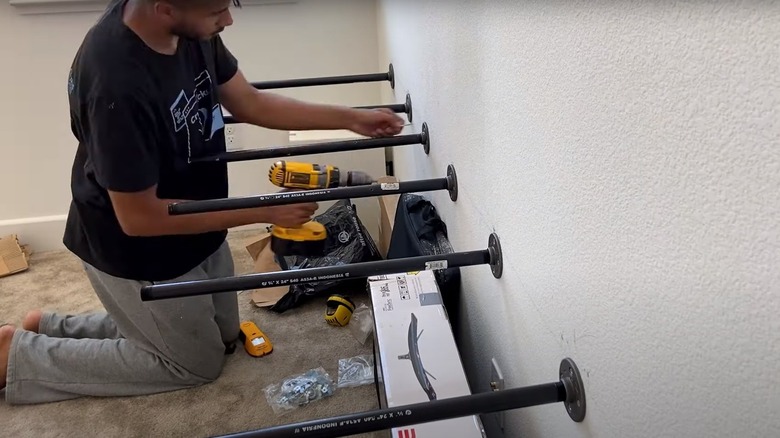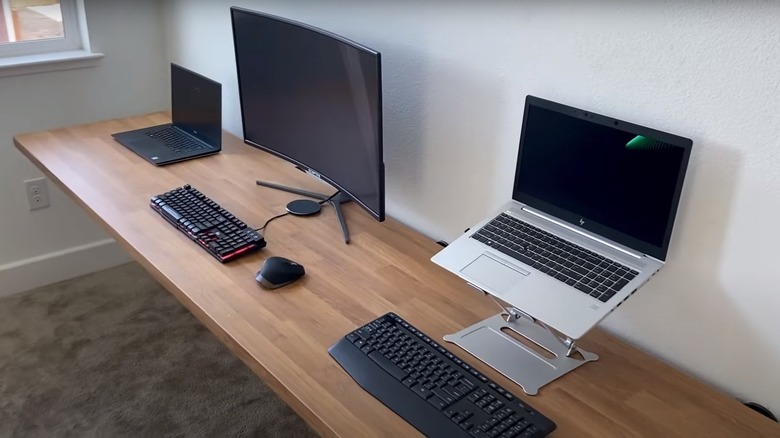The Easiest IKEA Hack To Create A Floating Desk
With an estimated 14% of people now working from home full time and many more on a hybrid schedule, having a dedicated space in your house to work is more important than ever. Unfortunately, transitioning a spare room or empty space into a home office can get expensive, especially if you need a larger desk to fit multiple monitors or stacks of important documents. If you're not finding anything in your desired price range, crafty YouTuber Ali Malik shared a solution: building your own minimalist-inspired floating desk using a countertop from IKEA.
This project might seem like quite the challenge, but the construction and installation are fairly simple to complete yourself, even if you're new to the world of DIYs. With a few basic tools, some additional materials from the hardware store, and a bit of time, you can create your own modern-looking floating desk setup for a fraction of the price you would spend buying one outright.
What materials you need
For this project, you're going to need to pick up a few materials, starting with the star of the show: a SÄLJAN countertop from IKEA that will act as the desktop. You're also going to need seven ¾-inch black iron pipes, seven ¾-inch flanges, 14 two-hole straps, and 2-inch and ¾-inch screws. In the video, Malik gets his items from Home Depot, but these are fairly standard hardware pieces that you could also find at your local hardware store or online.
You're also going to need some tools to complete this build, including a power drill, straightedge, level, stud finder, and tape measure. Assuming you already have the necessary tools on hand, the total cost for all of these materials should come to around $290, though what you spend might vary based on where you shop for your parts and what specific materials or brands you choose.
How to build this floating desk
Once you have all of your supplies gathered, you can begin building. The first step is to determine your desk's ideal height. Most desks sit at around 29 to 30 inches from the floor, but you can play around a bit with this measurement to see what feels best for you and your specific setup. Subtract 1 ½ inches from your measurement to account for the thickness of the countertop, then mark the height on the wall. In his video, Malik uses a laser level to keep his marks straight across the wall, but you can do this with a regular straightedge as well. Find the studs along this line, and mark where each of your flanges will go.
After this, it's time to pre-drill your holes and screw the flanges into the wall, ensuring you check the level as you work. Screw in the pipes once the flanges are installed, and set your countertop down on top. Leave some space from the wall if you plan to run any cables, and, once you're satisfied with the placement, you can use your two-hole straps to connect the pipes to the countertop with the shorter screws. After everything is secure, you'll be left with your own DIY floating desk.


